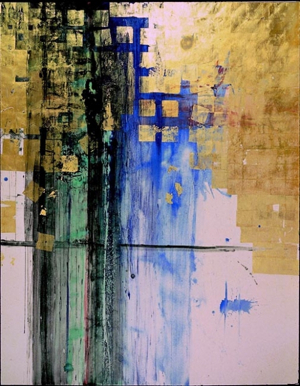
On the cover of William Edgar’s book The Face of Truth, there is an image of a painting by Mako Fujimura. It is abstract, and, I confess, does not make an immediate impression on me. I am busy, and turn past it quickly, anxious to get to the message and substance of the book.
And yet I pause, more out of duty than desire. I know Edgar and Fujimura well enough to know that there is something of substance here. I also know that, despite my appetite for accumulating information, imagination matters.
Chesterton tells the story of a boy in a park annoyed by the wind in his face. “Well,” the boy said to his mother, “why don’t you take away the trees, and then it wouldn’t wind.” The anecdote illustrates the materialist fallacy that what is visible is always and everywhere the real cause behind the invisible. According to the Christian imagination, Chesterton suggests, it is usually the other way around.
Fujimura, I think, would agree. His painting, entitled “Grace Foretold,” was occasioned by a visit to Niagara Falls. In it, gold (a symbol of divinity) cascades down onto silver (a symbol of death). “I have used the image of cascading gold as a metaphor,” Fujimura writes. “It speaks of the City of God descending among the cities of men.” The painting is from a series entitled Images of Grace. “Grace,” he writes, “is like this cascading gold. Like the Niagara Falls, a costly city of God may overwhelm us, and such vision captures us both inescapably and irreversibly.”
Like Fujimura, I too visited Niagara Falls recently with one of my children. To me, it was beautiful–an exhibit of God’s creativity and power. But it did not turn my thoughts to the City of God descending to the cities of men. Which is why I need people like Fujimura, artists to whom God has given the gift of seeing further. Without his help, my vision, like the child in Chesterton’s story, is woefully inadequate.
The truly remarkable thing is this. Not only do waterfalls now remind me of God’s cascading grace (for those of us who live in Ithaca, that alone is priceless!) More than that, I now understand grace a little bit better. What is grace? We can only understand the transcendent or spiritual by way of reference to the immanent or material. Grace, I now know, is like a waterfall. It is attractive yet dangerous, useful yet untamable. And its effect is to smooth and transform what is below–gradually.
Fujimura, an acclaimed Japanese American painter, will be speaking twice on Friday, Nov. 2nd. Please see events for more info.

